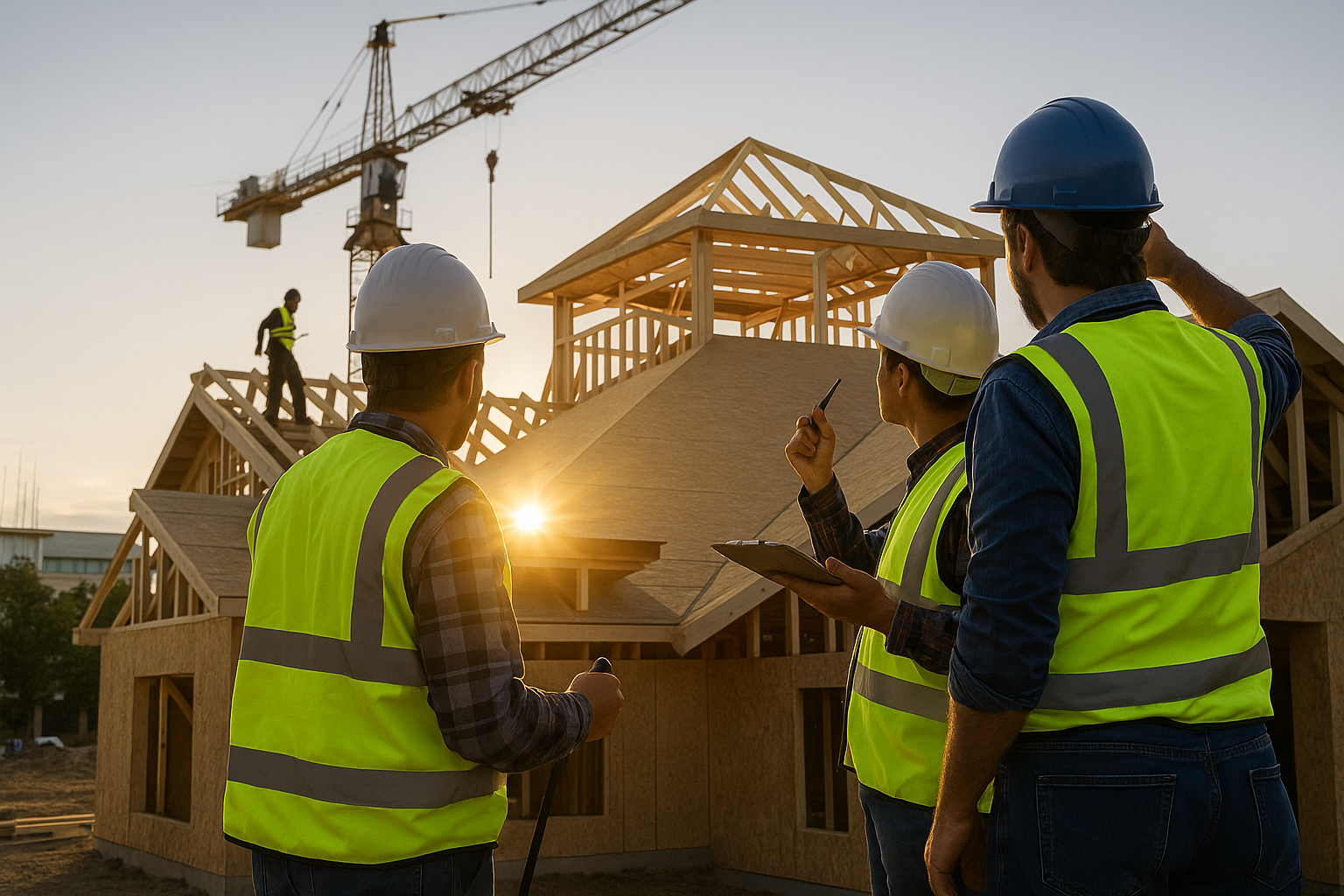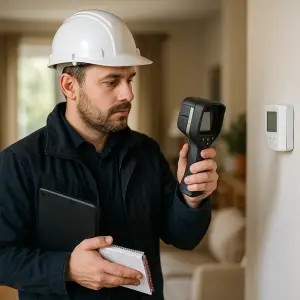Getting Ready for a New Roof Installation: A Complete Guide
At Ratio Seven, we know that starting any construction project feels big. Installing a new roof is no different. Your roof is one of the most important parts of your home, protecting everything underneath from the weather. Done right, the new roof installation will serve you well for decades. This is why planning and following every step is essential.
Whether you’re working on a new build or replacing an old roof, this guide will help you understand all the main steps, costs, materials, and legal requirements. We’ve also included how our services at Ratio Seven can support the process from start to finish.
Early Planning for Your New Roof Installation
A safe and strong roof starts before the first tile is even laid. Proper preparation helps avoid surprises and lets you budget wisely.
Site Assessment and Roof Planning
Start by checking the condition of the structure where the roof will be installed. If you’re replacing a roof, look for rot, sagging, or damage in the original deck. For new builds, confirm the design is suitable for your chosen roof covering, load requirements and pitch.
At Ratio Seven, we assist with accurate construction specification planning to match your roof design with building regulations and material choices. All key dimensions, ventilation spaces, and interface points must be checked during this stage.
Budgeting and Building Permission
The cost of a new roof varies depending on materials and labour. On average, you’ll need to budget for:
- Labour charges
- Scaffolding
- Decking repair or replacement
- Underlayment
- Insulation
- Tiles, slates, or sheets
Make sure your roof meets all local building codes before work begins. We offer help with building cost reduction services that focus on compliance while avoiding overspending.
For new roof installation on new builds, don’t start construction before securing permission from building control, especially when altering roof structures or adding dormers.
Preparing the Roof Deck: The First Step to Success
Before you can install the outer layers of your roof, you need to inspect the deck. Think of the deck like the foundation for your roof; if it’s weak, your whole system is at risk. Some common problems we see include:
- Damp or rotting boards
- Nail rust
- Uneven surfaces
- Loose sheathing
Once any damaged sections are removed and replaced, you’re ready for the next layer: the underlayment.
Waterproofing and Sealing: Proper Underlayment and Flashing Installation
Water damage is one of the biggest risks to a roof’s long-term strength. That’s why this stage is so important.
- Underlayment: A breathable membrane is usually fixed across the roof for extra waterproofing below the main roofing material.
- Flashing: These are thin metal sheets installed around chimneys, vents and where roof slopes meet. Flashing diverts water away from these areas, keeping them dry and secure.
We always install these with attention to manufacturer guidelines and local rules. This protects your home and ensures your insurance stays valid.
Choosing and Installing Your Roofing Material
Now we’re ready to lay the roof covering. Whether you’re using tiles, slates, or metal sheets, the technique differs depending on each material. This step in the new roof installation process demands precision.
We follow supplier instructions to the letter and check that overlap, alignment, and anchor points are correct. Materials most often used in the UK include:
- Concrete or clay tiles
- Natural slates
- Metal roofing
- Synthetic slates
- Membrane roofing in flat designs
Proper sealing around roof edges, ridge lines, and features like skylights is essential. Incorrect fitting at this stage could lead to leaks and weather damage in future storms.

Final Touches That Improve Roof Performance
After the main material is installed, there are still a few tasks to finish. These give your roof the best possible performance:
- Ridge Caps: These sit at the top of the roof, shaped to cover the gaps at the peak
- Ventilation Systems: Proper airflow prevents changes in air pressure, heat loss, and moisture build-up
- Guttering Connections: Rainwater management systems should be sealed and aligned correctly
All these finishing details add to your home’s protection and improve the efficiency of your insulation.
Roofing Insulation Regulations: What You Need to Know
Every new roof installation in the UK must meet current roofing insulation regulations. These cover anything from thermal insulation values to how ventilation is handled through the roofing layer.
According to Part L of the Building Regulations, homes must meet certain U-value targets. Put simply, U-values measure how quickly heat can pass through your roof. Lower numbers equal better insulation.
We often do heat loss surveys and SAP calculations for new builds to confirm that everything works properly. This ensures homes are cosy in the winter and energy bills stay as low as possible.
We also carry out air-tightness testing to check that the roof and the whole envelope are properly sealed. This helps catch small gaps or weak points in your insulation and airflow systems early on.
Staying Legal: Compliance with Building Regulations
Even more important than the regulations themselves is making sure your project remains on the right side of them. Non-compliance can result in costly fixes or rejected construction certificates.
Our team at Ratio Seven gives help with building regulations advice, ensuring every project meets the correct standards from the beginning. Whether it’s form submissions or spacing issues, we’re always a step ahead.
Common Questions About Roof Installation
How long does a new roof installation take?
Most standard installations take between 2 and 5 days, depending on weather and materials.
Do I need planning permission for a new roof?
Only if you’re altering the height or shape significantly. Always double-check with your building inspector.
What are the signs my current roof needs replacing?
Leaks, sagging, loose tiles, and frequent repairs are all red flags.
Are inspections needed for flat roofs, too?
Yes, even more so. Flat roofs are more prone to water pooling and UV damage.
Can I re-roof without removing the old one?
This is not advised. Full replacement ensures the deck and underlayers are in good condition.
What if my roof fails an air-tightness test?
We’ll provide advice and help with improvements. See our air testing FAQs to learn more about the process.
What Next?
So now you know how a new roof installation should be planned and completed step-by-step. Whether it’s taking measurements, meeting roofing insulation regulations, insulating properly or finishing accurately, each stage matters just as much as the next.
At Ratio Seven, we’re here to help builders, contractors, and homeowners navigate the full process from design to delivery. Our experience makes sure every new build roof meets your expectations, on spec, and on time. Whether you need help with regulation checks, cost-cutting advice or insulation reports, we offer it all in one place.
Let’s make your next roof ready for anything.




